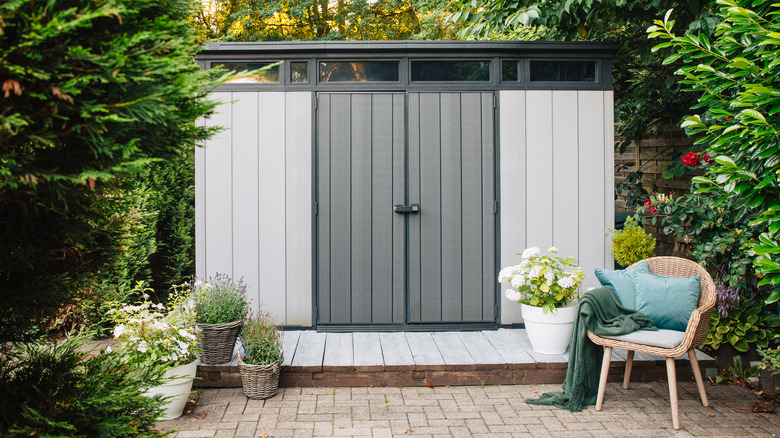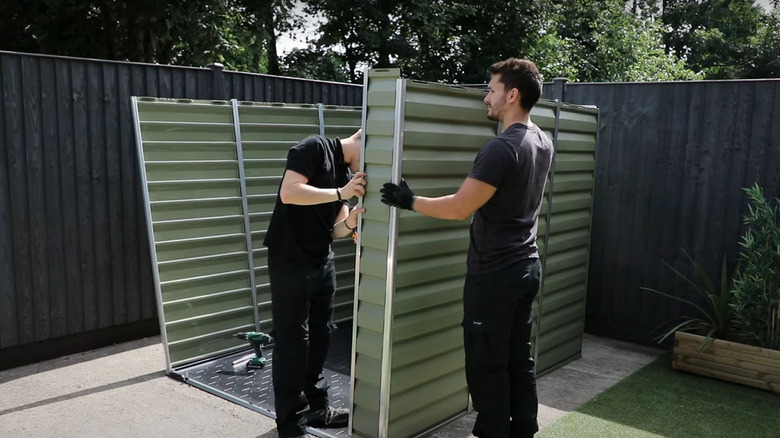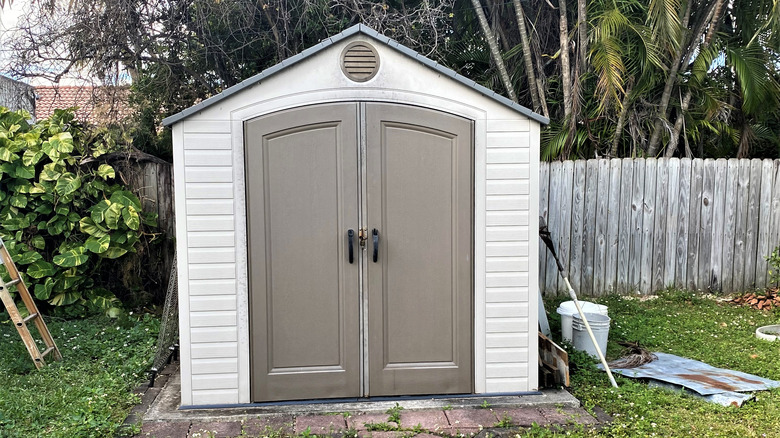Important Things To Know Before Buying A Plastic Storage Shed
Tools are strewn across your yard. Shovels and rakes are propped up against the side of your house. Fertilizer, weed killers, and pool chemicals are sitting on your porch. Is this a familiar picture? If your tools are scattered across the backyard or taking up space on your porch, you might need some extra storage around the home. Buying a shed can be a great help if you plan to de-clutter. Fortunately, there are many types available, including metal, wood, and vinyl-sided storage sheds. Metal is ideal if you need a durable and low-maintenance option, but it can be prone to rusting and less aesthetically pleasing than other materials. Sheds made of wood, on the other hand, look great, but require more care and attention and are on the expensive side.
If you're looking for the most budget-friendly option, either a pre-built plastic shed or a kit is well worth considering. Also known as resin sheds, these are usually made from a cheap, common polymer such as high-density polyethylene (HDPE) or polyvinyl chloride (PVC). While not typically as aesthetically pleasing as sheds made of wood, plastic sheds are pretty cheap. They're also easy to move and many different colors, sizes, and styles are available. Despite this, there are negatives — plastic sheds lack the customizability and security of other options. One thing to be aware of is that vinyl-sided and plastic sheds aren't the same. Vinyl-sided sheds are simply wooden sheds that have vinyl siding for extra protection.
The pros and cons of plastic storage sheds
Although both can range greatly, a typical price for a plastic shed is $940 while a typical price for a wooden shed is $3,596. They're readily available at home improvement retailers such as Lowe's and Home Depot. In addition to buying in person, you can also have a plastic shed shipped to you. You can then assemble it once it arrives. Many great DIY shed kits can be put up in no time at all. Unlike wood sheds, plastic sheds are also resistant to termites and won't rot since the materials are impermeable by rain. They're also lightweight and can easily be moved.
Despite these advantages, there are drawbacks to plastic sheds. For one, they aren't as secure as other options. Plastic isn't the toughest material, so they're fairly easy to break into. Avoid storing anything of value in a plastic storage shed, particularly if you live in a neighborhood with the potential for crime and theft. Plastic also offers poor wind and UV resistance. In addition to these drawbacks, some people simply don't like the look of plastic sheds and think they look cheaper and less elegant than other options. Plastic sheds are also less customizable – you won't be able to drill holes, paint, and make adjustments as easily as you could with a wooden shed.
Choosing the right plastic shed for your home
If you do decide to purchase a plastic storage shed, be aware that although setup is fairly easy, there are certain requirements to meet. A small plastic shed under 8×8 feet doesn't require a foundation and can be placed directly on the ground, but it's never a bad idea to add one anyway. However, always build a foundation for sheds larger than 8x8 feet. A shed with a built-in floor needs a concrete foundation while a shed without one can be placed on a gravel foundation. A gravel foundation is also needed for a plastic shed under 8x8 if the contents weigh more than 300 pounds. You should also follow these sizing tips to design or choose the ideal storage shed. Consider the planned contents, your property's available space, your budget, and the size limitations in your HOA, if there are any.
When choosing a plastic shed, ensure that you like the shed's appearance and have the right size. There are many different colors to choose from, but neutral colors such as white, brown, and gray are particularly popular. You can also choose different shapes. You may want to opt for one that's either square or more rectangular depending on the space you have available. Ensure that your shed increases your home's curb appeal by choosing a design that meshes well with your home design style.


